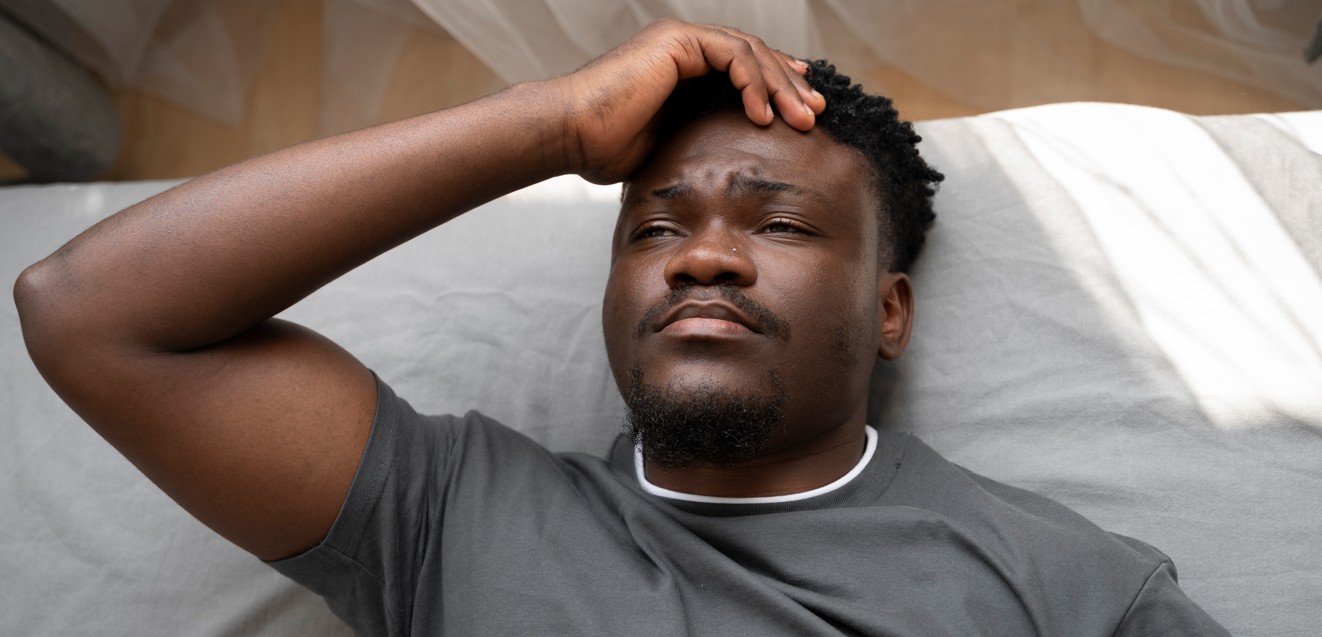Sleeping with the lights on? Research links nighttime light exposure to heart disease, stroke
Even moderate exposure—within the 70th to 90th percentile—was linked to a 16 per cent increased risk of death, signaling that this is not just a concern for those with glaring lights but for anyone not sleeping in true darkness.
Exposure to light at night - whether from streetlamps seeping through curtains, glowing phone screens, or bedroom televisions - could be silently undermining your heart health. A series of recent studies, including the largest of their kind to date, have found strong evidence that brighter nights may come at the cost of increased cardiovascular risk and premature death.
In a newly released prospective cohort study posted on medRxiv, researchers from the Flinders Health and Medical Research Institute, alongside collaborators from the UK and US, analysed data from nearly 89,000 participants in the UK Biobank. The study tracked over 13 million hours of personal light exposure using wrist-worn sensors and monitored health outcomes over an average of six years.
More To Read
- Postmortem confirms Makueni CEC Sonia Nzilani died of cardiac tamponade
- How follow-up programmes bridge treatment gap in non-communicable diseases
- Study shows women under 50 face higher risk of colon growths from ultra-processed foods
- WHO issues first global guidelines on diabetes in pregnancy
- Africa faces a growing stroke epidemic, urgently needs its own locally adapted care guidelines
- Study reveals why colorectal cancer resists immunotherapy
Participants exposed to the brightest levels of night light had a 41 per cent higher risk of cardio-metabolic death, including heart attack, stroke, and heart failure, compared to those in the darkest environments. All-cause mortality also rose significantly with increased night light exposure, showing a 30 per cent higher risk among the most exposed group.
Even moderate exposure—within the 70th to 90th percentile—was linked to a 16 per cent increased risk of death, signalling that this is not just a concern for those with glaring lights but for anyone not sleeping in true darkness.
The risk was particularly pronounced among women, who showed stronger associations between light exposure and heart failure and coronary artery disease. Additionally, younger participants were found to be more vulnerable to conditions such as atrial fibrillation, an irregular heartbeat associated with increased stroke risk.
These findings build upon an earlier study, which found that exposure to light during sleep impairs circadian rhythms—the internal clock that regulates essential biological processes like metabolism, blood pressure, and hormone production.
Using a validated computational model of the human circadian pacemaker, researchers demonstrated that participants with disrupted circadian rhythms, indicated by lower amplitude and misaligned phase, had significantly higher risks of all-cause and cardio-metabolic mortality.
"Light at night was a significant risk factor for developing cardiovascular diseases," the researchers said. "In addition to current preventative measures, avoiding light at night may be a useful strategy for reducing cardiovascular risk."
Artificial light at night (ALAN) is increasingly recognised as a subtle but serious environmental health threat. Its effects—such as suppressed melatonin, elevated night-time heart rate, and impaired glucose regulation—are now being linked to long-term health conditions, including obesity, diabetes, cardiovascular disease and premature death.
The study's conclusions support growing evidence that light pollution may be as harmful as noise or air pollution—but with a solution that’s far easier and cheaper to implement.
Researchers and public health experts recommend practical steps for reducing night-time light exposure:
Use blackout curtains or eye masks, limit screen time before bed, avoid sleeping with the TV or lights on, replace bright white bulbs with low-lux warm lighting, and advocate for urban lighting reforms to minimise light trespass into homes.
A growing body of scientific research is shedding light—quite literally—on an invisible but serious risk to cardiovascular health: exposure to artificial light at night.
Recent studies suggest that night-time light, whether from indoor lamps, streetlights, or glowing screens, may do more than disrupt sleep. It can interfere with the body’s circadian rhythm, elevating the risk of high blood pressure, heart disease, and even premature death.
One of the most compelling investigations to date comes from Grundy et al. (2021), who conducted a large-scale cohort study involving nearly 89,000 participants from the UK Biobank. Using wrist-worn sensors, researchers tracked personal light exposure patterns and followed participants for over six years.
The findings were striking: individuals exposed to the brightest levels of night-time light faced a 41 per cent higher risk of cardio-metabolic mortality and a 30% increase in overall death risk, compared to those who slept in the darkest conditions. Even moderate light levels during sleep were associated with increased risk.
The study also used a computational model of the human circadian pacemaker, revealing that disrupted circadian amplitude and phase were key predictors of mortality risk. The findings held true, even after accounting for age, physical activity, and other lifestyle factors.
Additional studies reinforce this growing concern:
In Japan, Obayashi et al. (2014) found that elderly individuals exposed to light levels as low as 3 lux—comparable to a dim nightlight—had significantly higher night-time blood pressure. The study showed a clear link between bedroom light exposure and increased risk of hypertension, a major contributor to heart disease and stroke.
Similarly, a US study by Cochrane et al. (2020) published in JAMA Internal Medicine followed over 43,000 women aged 35 to 74 and found that those who slept with a TV or light on were 17% more likely to develop cardiovascular disease. This group also showed increased incidence of obesity, diabetes, and hypertension, underscoring how chronic light exposure during sleep may impair metabolic and cardiovascular regulation.
In urban settings, Park et al. (2019) used satellite imaging to measure outdoor artificial light exposure across South Korean cities. Their study, which included over 50,000 adults, found that higher ambient night-time light levels were associated with elevated blood pressure, insulin resistance, arterial stiffness, and increased LDL cholesterol—all key drivers of cardiovascular disease. The effect was amplified in people with irregular sleep patterns, reinforcing the role of circadian rhythm disruption.
Together, these studies paint a compelling picture: sleeping in darkness isn’t just good for rest—it’s essential for heart health. Artificial light at night interferes with the body’s natural rhythms, increasing stress on the cardiovascular system and accelerating the development of chronic disease.
As light pollution rises globally, researchers are calling for greater public awareness and practical steps to reduce night-time light exposure.
Top Stories Today












































